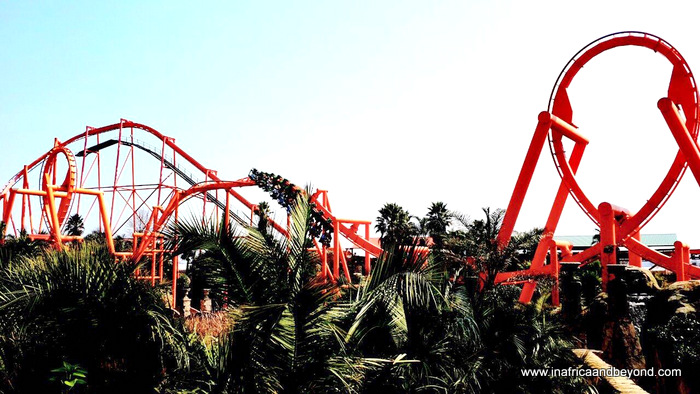The Greatest Guide To Johannesburg North Attractions
The Greatest Guide To Johannesburg North Attractions
Blog Article
How Johannesburg North Attractions can Save You Time, Stress, and Money.
Table of ContentsThe Greatest Guide To Johannesburg North AttractionsThe Main Principles Of Johannesburg North Attractions Johannesburg North Attractions - QuestionsThe Main Principles Of Johannesburg North Attractions The Main Principles Of Johannesburg North Attractions All About Johannesburg North AttractionsThe Johannesburg North Attractions Diaries
You need to maintain protection in mind and tourists have to stay sharp at all times when in unknown surroundings. Speak with the citizens when you are in town to discover the area you are remaining in. Johannesburg North attractions. When on the street (this doesn't relate to mall and various other protected atmospheres) finest general advice is to try your best to look like a neighborhood and to stay clear of showing any form of wide range
Some Of Johannesburg North Attractions
Teacher Revil Mason O. J. (Thomson, 1946) discovered the Witwatersrand's pre-colonial background. His historical job blew up the 'em pty land' myth, according to which the region was without human habitation before the arrival of European inhabitants. In his magazines Prehistory of the Transvaal: A Document of Human Task (1962) and Origins of Black People of Johannesburg and the Southern Western Central Transvaal Advertisement 3501880 (1986 ), Teacher Mason demonstrated the extent of social and economic growth in the location before Europeans established foot below.

The Buzz on Johannesburg North Attractions
In 1878, David Wardrop located gold in quartz capillaries at Zwartkop, north of Krugersdorp. In 1881, Stephanus Minnaar came across gold on the farm Kromdraai, near the Cradle of Mankind.
In March 1886, a protrusion (quickly to be called the Main Coral reef) was discovered, quite fortuitously, on Gerhardus Oosthuizen's ranch Langlaagte. Some claim that the Lancastrian coal miner George Walker discovered this coral reef. An additional itinerant English miner, George Harrison (that had formerly operated in Australian mines) acquired a prospecting licence in regard of Langlaagte in May 1886.
He chose to proceed in a mission for greener pastures, and disposed of his Langlaagte case for the handsome sum of 10. Alas: under lay the wealthiest goldfield ever located. The exploration of this abundant auriferous reef prompted a gold thrill that signified the end of agrarian tranquillity in the southerly Transvaal.
It would, within 6 years, become the largest community in southern Africa. Within a years, it would make the Z. A. R. up until then an anarchical and insolvent little state the most affluent nation in directory Africa. By the turn of the century, the Z. A. R. was to go beyond Russia, Australia and the United States of America to end up being the globe's leading gold producer, creating more than a quarter of the globe's gold.
Not known Details About Johannesburg North Attractions
It was referred to as Ferreira's Camp, named after Colonel Ignatius Ferreira. He was a Boer adventurer upon whom the British authorities had actually bestowed the condition of Friend of one of the most Distinguished Order of St Michael and St George (entitling him to the post-nominal letters C. M. G.) in gratefulness for his role in the battle that had deposed the Pedi king Sekhukhune in 1879.
Soon the camp was bristling with camping tents and wagons as novices arrived daily from far and wide. By September 1886, some 400 people lived in Ferreira's Camp, which soon boasted built iron and hardwood structures. 2 various other camps were established: Meyer's Camp on the farm Doornfontein, and Paarl Camp. The latter was nicknamed Afrikander Camp; lots of people from the Cape Colony settled there.

Some Known Incorrect Statements About Johannesburg North Attractions
This name gained money by word of mouth, such that the State Secretary attested the name to the Mining Commissioner on 9 October 1886. Stands in the village were auctioned on 8 December 1886. While some stands were cost 10, others were torn down for as little as sixpence.
Two years later, these erven were to alter hands for as long as 750 each. The tented camps diminished as a dorp of corrugated iron buildings developed and broadened north of the mines situated along the Key Reef Road. Locations such as Jeppe's Town (where working-class immigrants erected their homes) and Doornfontein (where the upscale brand-new 'Randlords' started to create their opulent homes) were soon contributed to the ever-expanding map of the community.
What Does Johannesburg North Attractions Do?
Apart from the road names, there were no indicators of Johannesburg being located in a Dutch-speaking country. Several years later, C. W. Kearns O. J. (among the initial young boys signed up at St John's University in 1898) would certainly remember: 'An unusual fact concerning Johannesburg was that, although it remained in the [Boer Republic], almost everyone talked English and also the Government servants resolved one in English, unless they were initial attended to in the Taal (or Low Dutch)'.
Because of this, Britain had a passion in making sure optimal problems for gold production on the Witwatersrand, which the gold was exported to London as opposed to Berlin a crucial rendered even more clamant by the Z. A. R - Johannesburg North attractions.'s boosting toenadering with Germany. Mine proprietors were on a clash with Head of state Kruger, whose policy of monopolistic giving ins (frequently approved to his cronies) avoided mining firms from procuring products of materials (particularly dynamite) and work on their own, more affordable terms
Johannesburg North Attractions - Truths
In 1890, the Volksraad had restricted the franchise to white men who her comment is here had resided in the Z. A. R. for fourteen years or longer, thus disqualifying the majority of the immigrants (who happened to be the major contributors to the fiscus). Frustration for the ballot was a plain pretense for promoting a different agenda; most uitlanders concerned themselves as short-lived site visitors and had no intent of staying in the Z.
Report this page